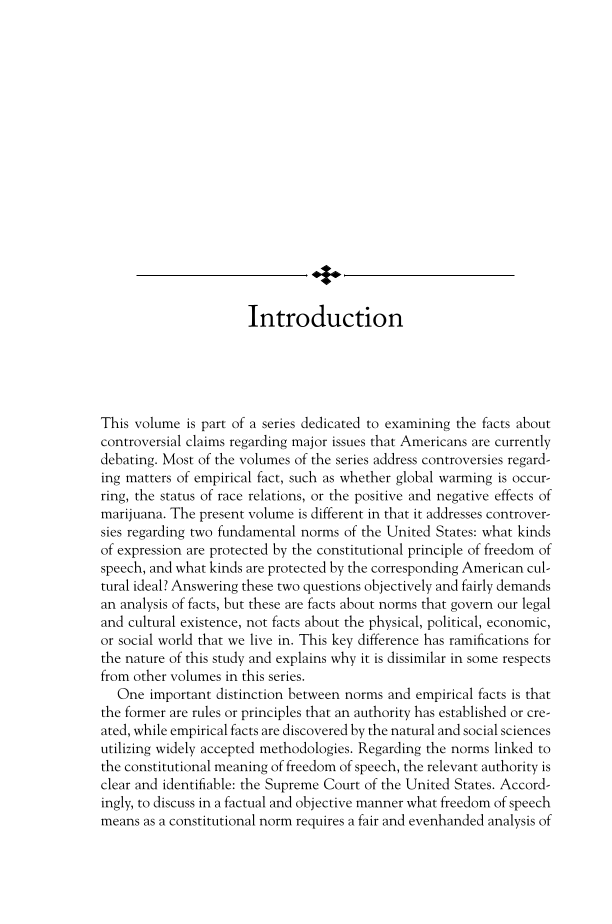Introduction This volume is part of a series dedicated to examining the facts about controversial claims regarding major issues that Americans are currently debating. Most of the volumes of the series address controversies regard- ing matters of empirical fact, such as whether global warming is occur- ring, the status of race relations, or the positive and negative effects of marijuana. The present volume is different in that it addresses controver- sies regarding two fundamental norms of the United States: what kinds of expression are protected by the constitutional principle of freedom of speech, and what kinds are protected by the corresponding American cul- tural ideal? Answering these two questions objectively and fairly demands an analysis of facts, but these are facts about norms that govern our legal and cultural existence, not facts about the physical, political, economic, or social world that we live in. This key difference has ramifi cations for the nature of this study and explains why it is dissimilar in some respects from other volumes in this series. One important distinction between norms and empirical facts is that the former are rules or principles that an authority has established or cre- ated, while empirical facts are discovered by the natural and social sciences utilizing widely accepted methodologies. Regarding the norms linked to the constitutional meaning of freedom of speech, the relevant authority is clear and identifi able: the Supreme Court of the United States. Accord- ingly, to discuss in a factual and objective manner what freedom of speech means as a constitutional norm requires a fair and evenhanded analysis of
Document Details My Account Print multiple pages
Print
You have printed 0 times in the last 24 hours.
Your print count will reset on at .
You may print 0 more time(s) before then.
You may print a maximum of 0 pages at a time.








































































































































































































































